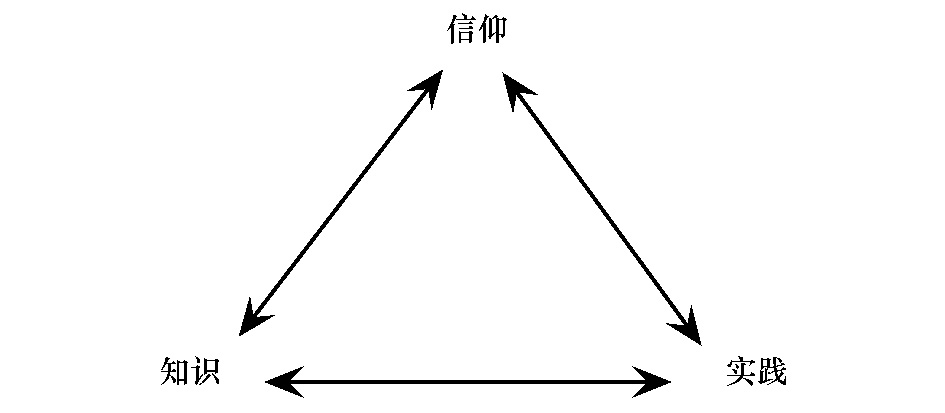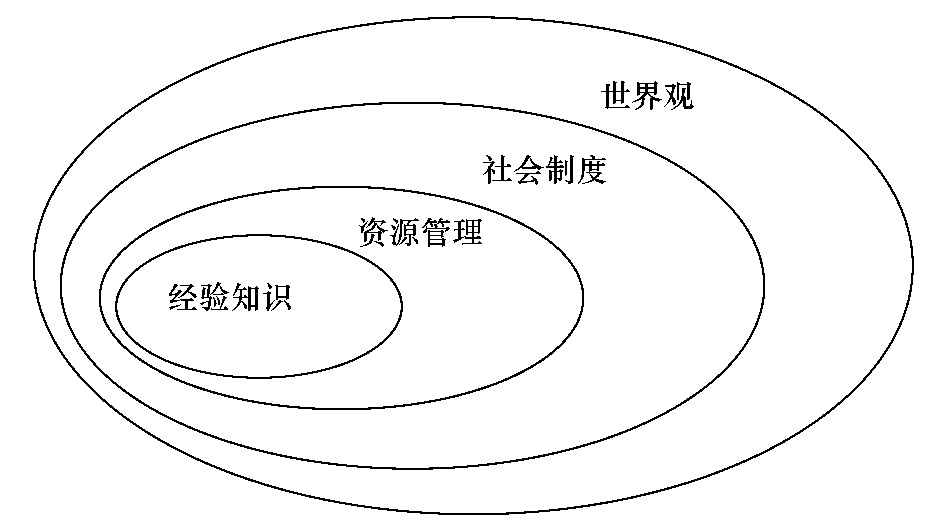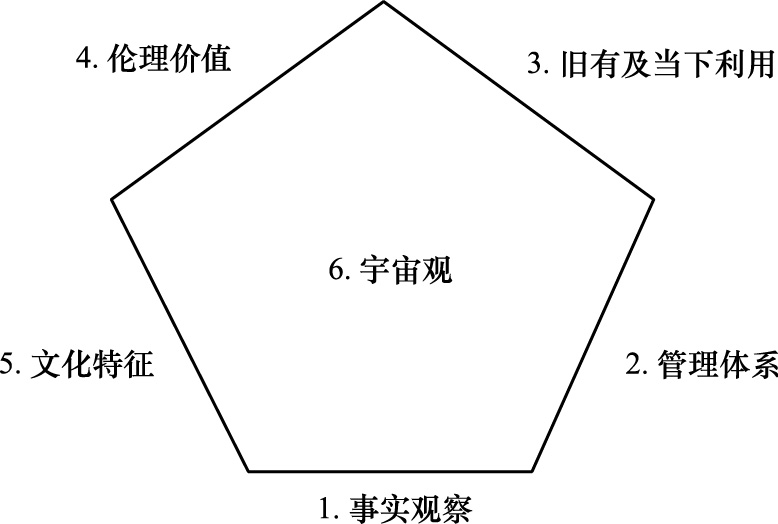文章信息
- 成功, 张家楠, 薛达元
- CHENG Gong, ZHANG Jianan, XUE Dayuan
- 传统生态知识的民族生态学分析框架
- Analytical frameworks for traditional ecological knowledge from the perspective of ethnoecology
- 生态学报, 2014, 34(16): 4785-4793
- Acta Ecologica Sinica, 2014, 34(16): 4785-4793
- http://dx.doi.org/10.5846/stxb201306111653
-
文章历史
- 收稿日期:2013-6-11
民族生态学正成为国际上生态学发展的前沿方向之一[1, 2, 3]。有学者[4]指出,“现代生态学正从传统生物生态学向可持续发展生态学,从经验生态学向管理决策生态学,从自然生态学向社会生态学,从恢复生态学向工程生态学扩展、升华和转型”。已有不少的生态学研究从重视抽象普适的概念与理论模型,转向深入个案的具体分析和实践应用[5, 6],特别是在生物多样性保护的领域[7, 8, 9],民族生态学得到广泛的探讨。越来越多的生态学家开始探索民族生态学的内涵和外延[2]。民族生态学的相关会议与论文也有逐步增多的趋势[10]。与此同时,民族生态学也在多个学术组织得到了重视,很多高等教育和研究机构开设了相关专业和课程,并招收了一定数量的研究人员[11]。
传统生态知识是民族生态学的主要研究内容之一。本文采用Berkes[3]的传统生态知识定义:“传统生态知识是一个知识、实践和信仰的集合体,这个集合体在适应进程中不断演化,并通过文化传递在代际之间进行传承,是关乎生命(包括人类)彼此之间及与其环境之间的关系。”需要特别指出的是,在本文中使用民族生态学时,民族一语不带有任何政治含义,仅有一种文化含义,意指一群彼此拥有文化认同的人们。
最早是由人类学家对传统生态知识进行系统性的研究,例如Conklin所做的开创性工作[12, 13, 14, 15]。他在研究菲律宾的Hanunoo人时,发现当地人掌握了数量巨大的有关当地动植物及其生活史知识,并能够以当地的分类体系识别1600 个左右的植物物种。在此基础上,他提出了民族生态学的概念。民族生态学被部分学者认为是一种研究方法,关注于一群人或一个文化所持有的生态关系的概念[3, 16, 17]。而国际民族生物学学会(International Society of Ethnobiology,ISE)对民族生态学的定义是:“对于过去和现在,人与其环境之间复杂关系的研究。”本文采用后者的定义。
我国的传统生态知识研究方兴未艾,已有多名生态学学者在此领域进行了开拓性工作。在传统生态知识的8 个应用型研究领域[3]:生物学与生态学洞见[18, 19, 20, 21] 、资源管理[22, 23, 24] 、保护区[25, 26, 27] 、生物多样性保护[28, 29, 30] 、环境监测[31] 、族际发展[32, 33] 、灾难管理[34] 和环境伦理[35] 等方面,我国的生态学学者都已经开展了各类相关研究。我国的人类学学者很早就进行了民族生态学的探索性研究,例如尹绍亭[36, 37]对基诺族的刀耕火种进行民族生态学分析,认为刀耕火种是当地一种有效的资源管理手段。
虽然国内学者已有丰硕的民族生态学研究成果,但这些研究显示出零散孤立的局面,尚需一个实用的对传统生态知识的分类与分析框架。国外学者对传统生态知识提出了多个分析框架,从而逐步累积并引导民族生态学的理论发展。本文在综述了国内外相关的研究成果上[3, 10],结合已有的传统知识研究基础[38, 39, 40, 41],对于传统生态知识的各个层面进行了深入探讨,建立了一个三维的传统生态知识的民族生态学分析框架,进而为我国民族生态学的相关研究提供理论与实践上的参考。
1 传统生态知识已有的分析框架 1.1 三角形框架Berkes提出的传统生态知识定义[3]显示出对传统生态知识的一种分类框架;知识-实践-信仰框架。图 1显示了这三者之间的关系。

|
| 图 1 传统生态知识的知识-实践-信仰三角形框架 Fig. 1 Triangle framework for knowledge-practice-belief of Traditional Ecological Knowledge |
Lewis[42]曾于1993 年将传统生态知识划分为分类体系水平上的地方性知识,以及对于过程或功能关系的理解性知识这两个层面,这可以简单对应于图 1中的知识-实践格局。随后在1994 年,Kalland[43]划分了3个层面:首先是经验性或实用性的知识;其次是“范例性知识”,即对经验观察的解释,并将其置诸某个文化背景内;第三个层次是“体系化知识”,即社会的制度化、规则化和规范化的知识。这种传统生态知识的划分初步显示出对于其社会文化层面的关注。其后,Orlove和Brush在1996 年[44],做出了3个层次的一种区分:土著环境知;基于这类知识的管理实践;动植物的仪式用途及其宗教信仰。同一时期的Stevenson[45]对于传统生态知识的区分是:特定环境知识;生态系统关联的知识;管理人类与环境关系的伦理典范。后两种划分,都在传统生态知识中注重了精神层面的内容。
1.2 四椭圆框架传统生态知识从内容上被分为3个层面,但在其内在关系上,又可以被分为4个相互关联的层次:本土经验知识-资源管理知识-社会制度知识-世界观知识[3]。图 2显示了这四者之间的关系。
对于动物、植物、微生物(特别是真菌类)、土壤、景观,民族基于其生产生活实践,形成了丰富的经验性知识,包括物种的识别、鉴定、分类、生活史、分布区、行为模式等[46, 47],还包括对于地理区域的生态知识[48]。各民族由于多样的地理环境和文化背景,对于其自然与环境的生态学认识也显示出多样性,从而产生了独具特色的经验性传统生态知识。
基于经验性知识,民族对于其环境内的各种自然资源形成了一个资源管理体系,并以传统生态知识的形式表现这种管理体系。这个系统包括基于本土经验性知识的各种实践、工具和技术手段。例如,在云南少数民族中长期存在的刀耕火种农作方式内[36, 37],既包括对于物候的识别,又包括所用的淬火锻造的手工刀具,还包括土地休耕与轮作的农业技术手段。
为使资源管理系统有效运作,需要一套行之有效的社会制度体系,而传统生态知识不可避免也包括这一约束人际关系的规范、规则和法律制度。在需要进行合作的农业和牧业生产领域和社区生活领域,采取有效的社会制度,是保证民族群体生产和生活有序进行的基础,这种社会制度一般来说并非采取成文法的形态,而是以习惯法等不成文的规范和规则形式,并经常以传统生态知识作为载体[49, 50]。在必须要有社会组织进行协调配合时,则需要制定制度规则[51, 52],以维持组织的有效运作。
世界观塑造了传统生态知识持有者的环境观念,并且赋予了他们观察环境的解释框架。从这点来说,世界观类似于Kalland[43]的“范例知识”,是给予其他部分以意义的基础。世界观的层面包括宗教、伦理、和更加普遍的信仰体系[3]。
上述四个分析层面的关系既可被认为是逐层包含的同心椭圆结构,即资源管理体系包含经验知识,社会制度包含资源管理体系,而它们都内置于其民族的世界观之内;也可以认为是经验知识产生了资源管理体系的基础,而资源管理体系塑造了社会制度,世界观不过是对于社会制度的适应而已。实际上,对这些层面并没有形成一致的看法[53]。而且,在层面之间的界限也不是十分清晰,特别是在资源管理知识与社会制度知识之间,经常在内容和对象上是重叠的。
1.3 五边形框架在2007 年,Houde[54]为了达到在一个共同管理的合作体系内使用传统生态知识的目标,阐述了传统生态知识的6个方面。他在所发表的报告中,对于传统生态知识的不同层面,采用一个五边形图示,从而表达了传统生态知识6个方面的内容,而此分析框架的核心是其宇宙观。图 3显示了这个分析框架[54]。
在Houde[54]的传统生态知识分析框架中,第一方面是对于事实的观察、分类和系统动态性理解的传统生态知识,即事实观察。第二方面是管理体系。第三方面是对于环境利用的旧有及当下的事实知识。第四方面是伦理与价值体系。第五方面是作为文化特征载体的传统生态知识。第六方面是宇宙观。这个对于传统生态知识的分析框架注意到了宇宙观对于其他知识的组织性作用,故此以宇宙观作为其核心部分。
2 传统生态知识的立体框架本文以一个三维立体的图例(图 4)来表示传统生态知识的民族生态学分析框架。在这个框架内,民族作为生物界的一部分,是民族生态学研究的客观对象,同时,作为认识的主体,又是传统生态知识的创造者和使用者,因此图示为既是认识主体的民族(图 4中黄色部分),又是认识对象的生物群体(图 4中灰色投影)。民族对于包括人类与生物(图 4中绿色部分)在内的客观自然(图 4中红色部分)的主观理解,构成了民族的生态学认知。而民族对于自然的主动改造,构成了民族的资源管理。民族对于其个体和集体行为的制度化过程,构成了民族的人际规范。而上述内容,都是经由具有民族文化和地方特色的哲学与伦理(图 4中蓝色部分)进行组织和解释的,所以将民族的哲学与伦理作为整体背景,以显示不同的民族之间的传统生态知识是不可简单通约的。不过,各民族的传统生态知识的民族生态学研究都可以采用这个分析框架(图 4),从而为民族生态学的理论探索与实践应用提供了参考模型。

|
| 图 4 传统生态知识的人-自然-哲学的三维立体框架 Fig. 4 3-D stereoscopic framework for people,nature,and philosophy of TEK |
现代西方主流的思想体系中,人与自然呈现出二元对立结构,人并不隶属于自然,而是自然的征服者[55]。而在非西方的各民族传统生态知识中,个人属于民族,民族属于人类,人类属于生物,生物属于自然界。在民族生态学视野下,自然是将人包括在内的自然界,而非外在于人类社会并与人类社会对抗的自然界。
在图 4中,民族的生态学认知包括民族对于自然的整体和具体认识。而自然中的生物与环境,并非相互排斥的不同对象,而是作为自然的内在有机构成出现的,即不同的生物和不同的环境,就好像一个有机体身上不同的组织和器官一样,它们之间是有内在有机联系的[55]。
民族的生态学认知是民族对于其生存的客观环境的主观理解,因此在某种意义上,是民族对于自然的被动的认识过程,具有一定的被动性。
2.2 民族的资源管理人类社会的一个重要特点就是拥有对于自然的主动改造能力,因此,在对于自然的被动认识基础之上,对于自然的资源管理,就成为传统生态知识的一个重要的层面。
例如,在我国云南哈尼族的梯田体系[56, 57, 58, 59, 60]和傣族的稻作体系[61, 62, 63, 64, 65, 66]内,水资源的管理都是尤为关键的,故此形成了蔚为壮观的资源管理体系,并以传统生态知识的形式表现出来。在国际上的相关研究也主要关注传统农业生态知识[54]。
2.3 民族的人际规范对于自然的资源管理一般不是个人的单独行动,而是一种集体行为,故此需要在人类社会内部规范彼此的行为模式,从而约束对于资源的不当利用等。Hardin[67]在“公地的悲剧”里所揭示的资源滥用问题,与Heller[68]在“反公地的悲剧”里所指出的资源利用不足问题,其本质并非是简单的资源管理问题,而是在人际范畴内的权利制度问题。故此,奥斯特姆[69]在其“社会生态系统可持续性分析的基本框架”一文中,将多个具有自组织倾向的因素纳入到这一基本框架中,包括集体选择规范、惯例/社会资本、社会生态系统知识/心智模型等具有传统生态知识意义的因素。奥斯特姆指出,一些基于现代生态学知识制订的政府政策导致了资源的加速破坏,而自然资源的传统使用者在采取传统的社会制度手段时,达成了可持续发展。故此,在她设立的“社会生态系统可持续性分析的基本框架”中,充分考虑到了传统生态知识的潜在贡献。她特别强调如果政府建立的规章制度与当地条件不符,长期的可持续性是难以达成的[69]。
2.4 民族的哲学与伦理奥斯特姆[69]也指出,各种类型的资源体系使用者在分享他们群体的道德和伦理准则时,通过既有的互惠惯例,和长期维护的履约信任度,可以在达成协议时实现更低的交易成本,监测成本也更低。这说明了道德和伦理对于社会制度的规范性作用。
现代的生态学与近代的自然科学都默认西方国家的宇宙观和世界观是天经地义,不言自明,并是不容质疑的。传统生态知识最初仅作为自然科学或社会科学研究的线索。随着民族生态学研究的深入,现在越来越多的传统生态知识的研究,关注一个民族的世界观、宇宙观和人生观等多个方面。例如,在世界观水平的人与自然关系上,西方的现代科学体系将人与自然分隔并产生了对立的关系[55]。而在北美的印第安文化中,和中国传统的天人合一的思想中,人从属自然,并是自然的一部分[4]。
在传统生态知识中,宇宙观、世界观和人生观不会简单地以西方理性传统的分科形式出现,而是以宗教、神话传说、艺术等形式,不断模造出一个渗入到传统生态知识各个层面的整体,这个整体在图 4中,以包裹其他部分的蓝色立方体形式存在。
3 讨论 3.1 从平面到立体的传统生态知识的民族生态学分析框架本文在综述了国外已有的3个传统生态知识的分析框架后,基于野外调查和相关研究,将传统生态知识的民族生态学分析框架从二维的平面关系,拓展到三维的立体关系,从而可以更清晰地描绘出传统生态知识在各个层面之间的对应关系。这种三维的传统生态知识分析框架,不再将传统生态知识视为静止的研究对象,而是将传统生态知识作为人类在主动或被动的自然认识过程中,不断积累的动态性知识。这样的改变,更符合传统生态知识的产生方式,也便利于研究人员对于传统生态知识的理解与把握。
奥斯特姆[69]指出,生态学与社会科学在各自独立发展起来之后,其结合并不容易。学者们倾向以各自的学科为主导来发展单一的理论模型去分析解决资源问题,事实证明这种努力经常事与愿违。故此,奥斯特姆特别强调社会生态系统是复杂系统,其可持续发展需要人类区分和驾驭复杂,而不是将复杂性剔除掉。本文提出的传统生态知识的民族生态学分析框架就是对于这一倡议的回应,从而对于将民族生态学应用于可持续发展提供了参考。
3.2 作为民族生态学研究对象的传统生态知识本文提出的这个立体模型显示,传统生态知识表现了人与自然之间,或人际之间,或人与精神世界之间的关系。传统生态知识作为一种研究内容,符合生态学是研究生物与其环境的关系的定义。民族生态学是民族学与生态学的交叉学科,结合了两者的概念与方法论,从而能够将具有民族人文特征的传统生态知识作为其研究对象。民族生态学的发展,不是简单的对于少数民族的生态知识的民族学分析,或者对于民族的社会-经济-自然的生态学分析,而是民族学与生态学之间的概念互通、方法交叉和理论借鉴,从而在问题拉动下,实现成果交融和实践应用。
虽然在本文提出的传统生态知识的四个方面,都涉及民族学与生态学的两个学科,但是在民族的生态学认知和资源管理方面,生态学已有较多研究基础,而在民族的人际规范和哲学与伦理方面,民族学的研究方法更成熟。需要指出的是,各民族的哲学与伦理的差异,导致其价值判断不同,故此不能简单地将某民族的价值观强加给任何其他民族。在进行民族生态学研究时,需要时刻铭记受调查的民族哲学和伦理基础,并记录当地人对于其资源管理和人际规范的解释。在这里仅采用观察是不够的,必须进行深入访谈,获取人类学意义上的内部视角。
3.3 在生态文明建设中发展与应用民族生态学生态文明建设是我国当下与未来的重点工程。中共十八大报告指出了我国人与自然、局部与整体、人与人之间的经济生态、政治生态、人文生态和社会生态关系的失衡、失序和失调问题,并号召全民把生态文明建设融入经济建设、政治建设、文化建设和社会建设的各方面及全过程。生态科学的方法论也正从物态到生态、从技术到智慧、从还原论/整体论到二者融合的系统论[4]。而民族生态学可谓适逢其时,可以对于我国的社会-经济-自然-政治-文化的可持续发展贡献力量。我国学者可以借助我国是多民族国家的优势,在民族生态学领域进行理论探索和实践应用。虽然目前从事民族生态学的中国学者数量仍然有限,对于中国区域内的传统生态知识的研究还需要开展大量工作,但是我国的民族生态学正在蓬勃发展,并且积极借鉴国际民族生态学的概念和理论,结合我国的特殊国情,以发展我国的民族生态学学科。可以相信,我国的民族生态学在生态文明建设的背景下将得到更多的发展与应用。
| [1] | Cox P A. Will tribal knowledge survive the Millennium? Science, 2000, 287(5450): 44-45. |
| [2] | Martin J F, Roy E D, Diemont S A W, Ferguson B G. Traditional Ecological Knowledge (TEK): Ideas, inspiration, and designs for ecological engineering. Ecological Engineering, 2010, 36(7): 839-849. |
| [3] | Berkes F. Sacred Ecology. 3rd ed. New York: Routledge, 2012: 3-19. |
| [4] | Wang R S. Integrating ecological civilization into social-economic development. Acta Ecologica Sinica, 2013, 33(1): 1-11. |
| [5] | Berkes F, Colding J, Folke C. Rediscovery of traditional ecological knowledge as adaptive management. Ecological Applications, 2000, 10(5): 1251-1262. |
| [6] | Gómez-Baggethun E, Mingorría S, Reyes-García V, Calvet L, Montes C. Traditional ecological knowledge trends in the transition to a market economy: Empirical study in the Doñana natural areas. Conservation Biology, 2010, 24(3): 721-729. |
| [7] | Gadgil M, Berkes F, Folke C. Indigenous knowledge for biodiversity conservation. Ambio, 1993, 22(2/3): 151-156. |
| [8] | Berkes F. Rethinking community-based conservation. Conservation Biology, 2004, 18(3): 621-630. |
| [9] | Berkes F, Turner N J. Knowledge, learning and the evolution of conservation practice for social-ecological system resilience. Human Ecology, 2006, 34(4): 479-494. |
| [10] | Brook R K, McLachlan S M. Trends and prospects for local knowledge in ecological and conservation research and monitoring. Biodiversity and Conservation, 2008, 17(14): 3501-3512. |
| [11] | Yin S T. Research on ethnic ecology in main land China (1950-2010). Thinking, 2012, 38(2): 61-65. |
| [12] | Conklin H C. Section of anthropology: An ethnoecological approach to shifting agriculture. Transactions of the New York Academy of Sciences, 1954, 17(2): 133-142. |
| [13] | Conklin H C. Hanunoo color categories. Southwestern Journal of Anthropology, 1955, 11(4): 339-344. |
| [14] | Conklin H C. Hanunoo Agriculture: A Report on an Integral System of Shifting Cultivation in the Philippines. Rome: UN/FAO, 1957. |
| [15] | Conklin H C. Division of anthropology: Some aspects of ethnographic research in Ifugao. Transactions of the New York Academy of Sciences, 1967, 30(1): 99-121. |
| [16] | Toledo V M. What is ethnoecology? Origins, scope and implications of a rising discipline. Ethnoecológica, 1992, 1(1): 5-21. |
| [17] | Johnson L M. Trail of Story, Traveller's Path: Reflections on Ethnoecology and Landscape. Athabasca: Athabasca University Press, 2010: 1-27. |
| [18] | Liu H M, Xu Z F, Tao G D. Ecological significance of Xishuangbanna Dai nationality's Holy Hill. Chinese Journal of Ecology, 1992, 11(2): 41-43. |
| [19] | Khasbagan, Soyolt, Manliang, Enhebayar, Gerelt, Hu W R. Traditional usage of wild plants for food by the Ejina mongolians and its exploitation and ethnoecological significance. Journal of Inner Mongolia Normal University: Natural Science Edition, 2005, 34(4): 471-474, 488-488. |
| [20] | Dao Z L, Long C L, Liu Y T. On traditional uses of plants by the Nu people community of the Gaoligong Mountains, Yunnan Province. Biodiversity Science, 2003, 11(3): 231-239. |
| [21] | Huang J, Long C L. Traditional cultivation of Coptis teeta and its values in biodiversity conservation. Biodiversity Science, 2006, 14(1): 79-86. |
| [22] | He P K, Li R, Cao J Q. Yunnan LanCang Aini people (Hani) use of local forest experience of knowledge management. Forestry and Society, 2003, (4): 24-26. |
| [23] | Pei S J. Study on swidden cultivation in tropic area of south in Yunnan from the perspective of ethnoecology. Tropic Botany Research, 1986, 29-30: 1-7. |
| [24] | Long C L. Traditional Management of Natural Resources in Ethnic Societies. Beijing: China Environmental Science Press, 2009: 1-193. |
| [25] | Liu S, Min Q W, Xu Y T, Zhang C Q, Cheng C Z, Shi Y Q, Wu L C. Role of traditional knowledge in forest resources conservation in ethnic areas: a case study on Xiaohuang village in Congjiang county, Guizhou province. Resources Science, 2011, 33(6): 1046-1052. |
| [26] | Ai H S, Zhou H. Deity mountain forest and its function in natural reservation in Gaoligong Mountain of Yunnan Province. Chinese Journal of Ecology, 2003, 22(2): 92-96. |
| [27] | Xu J C. Role of indigenous people in biodiversity conservation and utilization in Jinping divide Nature Reserve: an ethnoecological perspective. Chinese Journal of Ecology, 2003, 22(2): 86-91. |
| [28] | Luo P, Pei S J, Xu J C. Sacred site and its implications in environmental and biodiversity conservation in Yunnan, China. Journal of Mountain Science, 2001, 19(4): 327-333. |
| [29] | Xu Z F, Liu H M. Palm leaves Buddhism sutra culture of Xishuangbanna Dai and plant diversity conservation. Chinese Biodiversity, 1995, 3(3): 174-179. |
| [30] | Zou L, Xie Z Q, Ou X K. Significance of Tibetan sacred hills in nature conservation of Shangri-La Gorge, Yunnan. Chinese Biodiversity, 2005, 13(1): 51-57. |
| [31] | Gao H, Ouyang Z Y, Zheng H, Bluemling B. Perception and attitudes of local people concerning ecosystem services of culturally protected forests. Acta Ecologica Sinica, 2013, 33(3): 756-763. |
| [32] | Liu H M, Xu Z F, Duan Q W, Xu Y K. An approach to conserve plant diversity through Dai nationality religious beliefs in Xishuangbanna. Guihaia, 2001, 21(2): 173-176. |
| [33] | Wu Z L, Zhou H. Traditional value and practical significance of ecology in Longshan Forest. Thinking, 1997, 23(3): 68-72. |
| [34] | Fu G H. Climatic hazards and indigenous response: the traditional ecological knowledge of Longji Zhuang people. Study of Ethnics in Cuangxi, 2010, (2): 84-92. |
| [35] | Zhou H, Zhao D G, Lü H H. Significance of ecological Ethics of cultural tradition in Deity Mountain Forests. Chinese Journal of Ecology, 2002, 21(4): 60-64. |
| [36] | Yin S T. Ethnoecology research on swidden cultivation of Jinuo people. Agriculture Archaeology, 1988, (1): 318-334. |
| [37] | Yin S T. Ethnoecology research on swidden cultivation of Jinuo people (continue). Agriculture Archaeology, 1988, (2): 390-408. |
| [38] | Cheng G, Wang C, Xue D Y. Attitude to the traditional knowledge of international governmental organizations and suggested strategies of China. Biodiversity Science, 2012, 20(4): 505-511. |
| [39] | Cheng G, Gong J D, Xue D Y, Guo Y J, Liu C H. Status of Jingpo people's traditional medicine healers in Longchuan, Yunnan. Journal of Yunnan Agricultural University: Natural Science, 2013, 28(2): 151-156. |
| [40] | Zhang L R, Cheng W J, Xue D Y. Progress and trends for implementation of the convention on biological diversity. Acta Ecologica Sinica, 2009, 29(10): 5636-5643. |
| [41] | Xue D Y, Wu J Y, Zhao F W. Actions, progress and prospects in implementation of the Convention on Biological Diversity during the past 20 years in China. Biodiversity Science, 2012, 20(5): 623-632. |
| [42] | Lewis H T. Traditional ecological knowledge: some definitions//Williams N M, Baines G, eds. Traditional Ecological Knowledge: Wisdom for Sustainable Development. Canberra: Centre for Resource and Environmental Studies, Australian National University, 1993: 8-12. |
| [43] | Kalland A. Indigenous knowledge-local knowledge: prospects and limitations//Hansen B V, ed. Arctic Environment: A Report on the Seminar on integration of Indigenous Peoples' knowledge. Copenhagen: Ministry of the Environment/The Home Rule of Greenland, 1994: 150-167. |
| [44] | Orlove B S, Brush S B. Anthropology and the conservation of biodiversity. Annual Review of Anthropology, 1996, 25(1): 329-352. |
| [45] | Stevenson M G. Indigenous Knowledge in environmental assessment. Arctic, 1996, 49(3): 278-291. |
| [46] | Berlin B. Folk systematics in relation to biological classification and nomenclature. Annual Review of Ecology and Systematics, 1973, 4(1): 259-271. |
| [47] | Balick M J. Transforming ethnobotany for the new millennium. Annals of the Missouri Botanical Garden, 1996, 83(1): 58-66. |
| [48] | Halme K J, Bodmer R E. Correspondence between scientific and traditional ecological knowledge: rain forest classification by the non-indigenous ribereños in Peruvian Amazonia. Biodiversity and Conservation, 2007, 16(6): 1785-1801. |
| [49] | Olsson P, Folke C. Local ecological knowledge and institutional dynamics for ecosystem management: a study of Lake Racken Watershed, Sweden. Ecosystems, 2001, 4(2): 85-104. |
| [50] | Olsson P, Folke C, Berkes F. Adaptive co-management for building resilience in social-ecological systems. Environmental Management, 2004, 34(1): 75-90. |
| [51] | Armitate D R. Traditional agroecological knowledge, adaptive management and the socio-politics of conservation in Central Sulawesi, Indonesia. Environmental Conservation, 2003, 30(1): 79-90. |
| [52] | Gray C L, Bilsborrow R E, Bremner J L, Lu F. Indigenous land use in the Ecuadorian Amazon: a cross-cultural and multilevel analysis. Human Ecology, 2008, 36(1): 97-109. |
| [53] | Usher P J. Traditional ecological knowledge in environmental assessment and management. Arctic, 2000, 53(2): 183-193. |
| [54] | Houde N. The six faces of traditional ecological knowledge: challenges and opportunities for Canadian co-management arrangements. Ecology and Society, 2007, 12(2): 34-34. |
| [55] | Pierotti R, Wildcat D. Traditional ecological knowledge: the third alternative (commentary). Ecological Applications, 2000, 10(5): 1333-1340. |
| [56] | Huang S W, Yuan A L. A survey of rice-fowl-fish symbiosis and biodiversity in the terraced fields of Yunnan Hani community. Academic Exploration, 2011, (2): 42-47. |
| [57] | Wang L, Wang L, Yang B H, Li J. Preliminary study on Hani terraced-field water culture and its protection. China Rural Water and Hydropower, 2007, (8): 42-44. |
| [58] | Xu F R, Tang C F, Yu T Q, Dai L Y, Zhang H S. Diversity of paddy rice varieties from Yuanyang Hani's terraced fields in Yunnan, China. Acta Ecologica Sinica, 2010, 30(12): 3346-3357. |
| [59] | Yao M, Cui B S. The vertical characteristics of ecosystem of Hani's terrace paddyfield in Yunnan, China. Acta Ecologica Sinica, 2006, 26(7): 2115-2124. |
| [60] | Zhu Q X, Wang Z L. Sustainable development pattern of ethnoecological system-a case study on Hani terrace. Resource Development & Market, 2005, 21(3): 206-209. |
| [61] | Gao L S. The role played by irrigation in the history of the Dai nationality. Journal of South-Central University for Nationalities: Humanities and Social Science, 2000, 20(1): 85-89. |
| [62] | Gao L S. Research of Tradition Irrigation and Environmental of the Dai People in Xishuangbanna. Kunming: Yunnan Nationalities Press, 1999: 60-61. |
| [63] | Guo J J. Rice-farming Culture of the Dai people in Xishuangbanna. Kunming: Yunnan University Press, 1998: 62-97. |
| [64] | Guo J J. Tradition and change of the water culture of the dais in Xishuangbanna: A case study of Manyuan village of Menghan, Jinghong. Ethno-National Studies, 2006, 3(2): 57-65. |
| [65] | Fang L Y, Liu H M, Cui J Y, Xu Z F. Traditional use of wetland plants in Dai villages in Xishuangbanna, Yunnan. Biodiversity Science, 2006, 14(4): 300-308. |
| [66] | Yan L. Rice-farming and ritual of Dai Nationality. Guizhou Ethnic Studies, 2011, (5): 73-79. |
| [67] | Hardin G. The tragedy of the commons. Science, 1968, 162(3859): 1243-1248. |
| [68] | Heller M A. The tragedy of the Anticommons: property in the transition from marx to markets. Harvard Law Review, 1998, 111(3): 621-688. |
| [69] | Ostrom E. A general framework for analyzing sustainability of social-ecological systems. Science, 2009, 325(5939): 419-422. |
| [4] | 王如松. 生态整合与文明发展. 生态学报, 2013, 33(1): 1-11. |
| [11] | 尹绍亭. 中国大陆的民族生态研究(1950—2010年). 思想战线, 2012, 38(2): 61-65. |
| [18] | 刘宏茂, 许再富, 陶国达. 西双版纳傣族“龙山”的生态学意义. 生态学杂志, 1992, 11(2): 41-43. |
| [19] | 哈斯巴根, 苏亚拉图, 满良, 恩和巴雅尔, 格日乐图, 胡乌仁. 额济纳蒙古族传统野生食用植物及其开发利用和民族生态学意义. 内蒙古师范大学学报: 自然科学版, 2005, 34(4): 471-474, 488-488. |
| [20] | 刀志灵, 龙春林, 刘怡涛. 云南高黎贡山怒族对植物传统利用的初步研究. 生物多样性, 2003, 11(3): 231-239. |
| [21]/td> | 黄骥, 龙春林. 云南黄连的传统种植及其在生物多样性保护中的价值. 生物多样性, 2006, 14(1): 79-86. |
| [22] | 何丕坤, 李荣, 曹加权. 云南澜沧爱尼人(哈尼族)利用乡土知识管理森林的经验. 林业与社会, 2003, (4): 24-26. |
| [23] | 裴盛基. 用民族生态学的观点初探滇南热带地区的轮歇栽培. 热带植物研究, 1986, 29-30: 1-7. |
| [24] | 龙春林. 民族地区自然资源的传统管理. 北京: 中国环境科学出版社, 2009: 1-193. |
| [25] | 刘珊, 闵庆文, 徐远涛, 张灿强, 程传周, 石有权, 吴老成. 传统知识在民族地区森林资源保护中的作用——以贵州省从江县小黄村为例. 资源科学, 2011, 33(6): 1046-1052. |
| [26] | 艾怀森, 周鸿. 云南高黎贡山神山森林及其在自然保护中的作用. 生态学杂志, 2003, 22(2): 92-96. |
| [27] | 许建初. 从民族生态学的角度探讨金平分水岭自然保护区周边民族对生物多样性的保护和利用. 生态学杂志, 2003, 22(2): 86-91. |
| [28] | 罗鹏, 裴盛基, 许建初. 云南的圣境及其在环境和生物多样性保护中的意义. 山地学报, 2001, 19(4): 327-333. |
| [29] | 许再富, 刘宏茂. 西双版纳傣族贝叶文化与植物多样性保护. 生物多样性, 1995, 3(3): 174-179. |
| [30] | 邹莉, 谢宗强, 欧晓昆. 云南省香格里拉大峡谷藏族神山在自然保护中的意义. 生物多样性, 2005, 13(1): 51-57. |
| [31] | 高虹, 欧阳志云, 郑华, Bluemling B. 居民对文化林生态系统服务功能的认知与态度. 生态学报, 2013, 33(3): 756-763. |
| [32] | 刘宏茂, 许再富, 段其武, 许又凯. 运用傣族的传统信仰保护西双版纳植物多样性的探讨. 广西植物, 2001, 21(2): 173-176. |
| [33] | 吴兆录, 周鸿. 龙山森林传统的生态价值及现实意义. 思想战线, 1997, (3): 68-72. |
| [34] | 付广华. 气候灾变与乡土应对: 龙脊壮族的传统生态知识. 广西民族研究, 2010, (2): 84-92. |
| [35] | 周鸿, 赵德光, 吕汇慧. 神山森林文化传统的生态伦理学意义. 生态学杂志, 2002, 21(4): 60-64. |
| [36] | 尹绍亭. 基诺族刀耕火种的民族生态学研究. 农业考古, 1988, (1): 318-334. |
| [37] | 尹绍亭. 基诺族刀耕火种的民族生态学研究(续). 农业考古, 1988, (2): 390-408. |
| [38] | 成功, 王程, 薛达元. 国际政府间组织对传统知识议题的态度以及中国的对策建议. 生物多样性, 2012, 20(4): 505-511. |
| [39] | 成 功, 龚济达, 薛达元, 郭云胶, 刘春晖. 云南省陇川县景颇族传统医生的现状分析. 云南农业大学学报: 自然科学版, 2013, 28(2): 151-156. |
| [40] | 张丽荣, 成文娟, 薛达元. 《生物多样性公约》国际履约的进展与趋势. 生态学报, 2009, 29(10): 5636-5643. |
| [41] | 薛达元, 武建勇, 赵富伟. 中国履行《生物多样性公约》二十年: 行动、进展与展望. 生物多样性, 2012, 20(5): 623-632. |
| [56] | 黄绍文, 袁爱莉. 云南哈尼族梯田稻禽鱼共生系统与生物多样性调查. 学术探索, 2011, (2): 42-47. |
| [57] | 王龙, 王琳, 杨保华, 李靖. 哈尼梯田水文化及其保护初步研究. 中国农村水利水电, 2007, (8): 42-44. |
| [58] | 徐福荣, 汤翠凤, 余腾琼, 戴陆园, 张红生. 中国云南元阳哈尼梯田种植的稻作品种多样性. 生态学报, 2010, 30(12): 3346-3357. |
| [59] | 姚敏, 崔保山. 哈尼梯田湿地生态系统的垂直特征. 生态学报, 2006, 26(7): 2115-2124. |
| [60] | 朱青晓, 王忠丽. 民族生态系统的可持续发展模式——以哈尼梯田为例. 资源开发与市场, 2005, 21(3): 206-209. |
| [61] | 高立士. 水利灌溉在傣族历史上的作用. 中南民族大学学报: 人文社会科学版, 2000, 20(1): 85-89. |
| [62] | 高立士. 西双版纳傣族传统灌溉与环保研究. 昆明: 云南民族出版社, 1999: 60-61. |
| [63] | 郭家骥. 西双版纳傣族的稻作文化研究. 昆明: 云南大学出版社, 1998: 62-97. |
| [64] | 郭家骥. 西双版纳傣族的水文化: 传统与变迁——景洪市勐罕镇曼远村案例研究. 民族研究, 2006, 3(2): 57-65. |
| [65] | 方利英, 刘宏茂, 崔景云, 许再富. 西双版纳傣族村寨对湿地植物的传统利用. 生物多样性, 2006, 14(4): 300-308. |
| [66] | 阎莉. 傣族的稻作与祭祀. 贵州民族研究, 2011, (5): 73-79. |
 2014, Vol. 34
2014, Vol. 34






